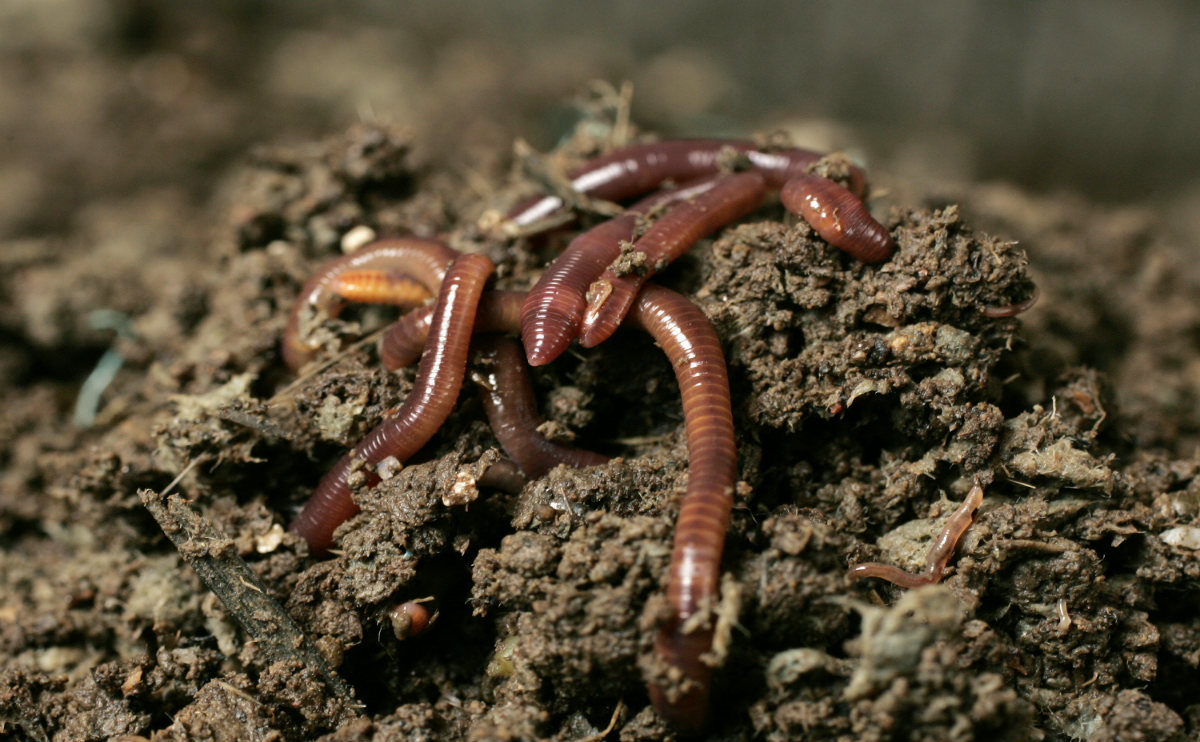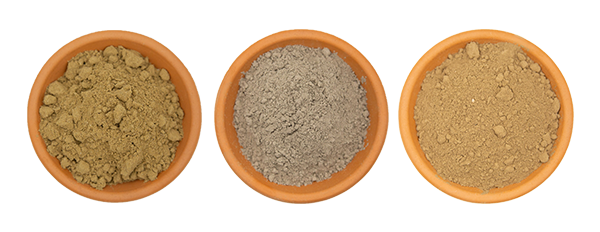Worms: The Ancient Secret to the Rise of Human Civilization
By Thomas Forrest | 8 April 2017

Takeaway: Charles Darwin once stated this creature was the single most influential living thing in history. It might surprise you, but we are not talking about humans, we are talking about our favorite wriggly garden friend: the worm! Here are a few ways to put worms to work in your garden this spring.
There is a single organism responsible for the rise of the earliest urban communities. Without their hard work in Ancient Egypt, India and Mesopotamia, agricultural development would not have been able to sustain humanity’s growth.
Charles Darwin once stated this creature was the single most influential living thing in history. It might surprise you, but we am not talking about humans, we are talking about our favorite wriggly garden friend: the worm! Here are a few ways to put worms to work in your garden this spring.
Worms. They are our most important, sustainable recycling system. It has been said that wherever earthworms plow, people thrive. When worms perish, societies collapse. Earthworms provide an ongoing regeneration of soils, offering up organic fertilizers to plants and nourishing terrestrial ecosystems.
Worms ventilate the soil as they plow up the earth, converting decaying organic matter into delicious excrement rich in minerals, enzymes and beneficial bacteria. Worms have survived five major extinctions, and these days there are more than 5,500 species worldwide.
In modern horticulture, harvesting the hard work of worms offers growers around the globe a sustainable fertilizer. From small, home-based worm farms, to commercial-scale, septic composting, worms are helping us with waste management, and our gardens are flourishing as a result.
But without teeth, jaws or a stomach, how do worms have such a huge impact in our soils? It’s actually the millions of microbes inside and around the worms, acting in a beautifully symbiotic relationship, which improves our dirt.
Worms secrete slimy, bacteria-filled mucus from their skin to keep themselves cool, and this breaks down surrounding nutrients. They consume what can be sucked into their rudimentary digestive tract, together with masses of bacteria.
Inside their guts, this mixture alters the complex cell structure of the original food source into its basic elements and compounds, changing it into a simpler form that can be used directly by both the worms and the bacteria for nourishment. The bacteria multiply in number within the guts of worms and are released back into the soil with the worm’s castings (poop) to further break down foodstuffs.
The waste products of worms, also known as vermicompost, provide plants with a highly nutritious fertilizer. The bacteria and the worm’s digestive system also act as a neutralizing agent, removing dangerous toxins and infected materials from the soil. The complex pathogens are broken down into harmless components and removed from the soil structure. As this process continues, the beneficial bacteria continue to develop and improve soil quality over time.
Worms are cold-blooded critters, and they move up and down the soil profile to regulate their body temperatures. The mucus they secrete helps soil particles stick together. The worms continually aerate and turn the soil, moving nutrients into the root zone, which vastly improves the quality, aeration and nutrient content of the growing medium. Worm humus is an incredibly effective source of organic matter for your soil structure, helping to balance pH levels through the interactions of the bacteria and different compounds.
The true nutritional value of worm castings is somewhat irrelevant and can be difficult to determine. The N-P-K labels found on store-bought fertilizers accounts for the readily soluble forms of nutrients found in these mineral fertilizers, whereas the worm castings interact with micro-organisms to slowly deliver nutrients to your plants.
The nutritional value of worm castings varies according to the diet of your worms, but generally, the castings release a complete range of macronutrients and trace elements, along with beneficial enzymes. That being said, planting a seedling into 100% worm castings won’t cause monster growth—it will actually have the opposite effect.
Too much vermicompost causes a problem with the electrical conductivity (EC) of the growing medium, and salt buildup and toxicities can occur. The ideal ratio is around 20% worm castings, but experiment at home and see what works for you.
The most common type of worm used for modern gardens and vermicomposting are the red wigglers (Eisenia fetida). These guys thrive in the acidic layer of soil, where decomposition takes place, making them ideal for compost piles. They can eat a whopping 1.5 times their body weight in organic matter each day, making them some of the most productive recyclers on the planet.
Red wigglers are native to Europe, but have been introduced—both intentionally and unintentionally—to every other continent on Earth, aside from Antarctica. Like most other common earthworms, red wigglers are hermaphroditic, but two worms are still generally required for reproduction.
Working with Worms in the Garden
Now that you understand why and how worms and their bacteria benefit your soil and plants, let’s look at ways to apply them in the garden. When employing worms in your soil garden, it’s difficult to make mistakes. Worms thrive in a range of conditions and will regulate their population on their own, matching their reproductive efforts with environmental limitations.
The main consideration for working with worms is basic hygiene and sterility practices. Most worms from reputable breeders are washed at least twice before being shipped in peat moss to reduce the chances of pathogens spreading. Some careful growers actually purge their worms by putting them in wet cornmeal for 24 hours and rinsing them before adding to the garden. It’s worth investigating which variety of worm suits your needs best and source them from a reliable provider.
Worms in Soilless Systems
Believe it or not, worms have a variety of applications in soilless systems. Commonly coined vermiponics, horticulturalists have been successfully using worms and their castings in different growing systems all over the world. For starters, let’s look into their symbiotic role in aquaponic systems.
Aquaponics – People often question the survival of the worms in a predominantly liquid environment. We have all seen worms surfacing after a heavy rainfall, so it’s natural to wonder how they will breathe in a flooded growbed. The answer is oxygenation. The water flowing through an aquaponic system is heavily aerated to help with fish and plant development. The reason why worms surface after a rainfall is because the water has saturated the dirt, forcing the oxygen from the soil, which drives the worms up.
Worms can successfully flourish in gravel, grow stones or expanded clay growing media, and they help efficiently recycle fish waste and decaying plant matter. Their beneficial bacteria help make the nutrients more available to plants, and this additional metabolic layer results in less ongoing system maintenance. One study by the Soil Ecology Lab at Ohio State University found that vermicompost in highly oxygenated water suppresses plant diseases, including pythium, rhizoctonia, plectosporium and verticillium. It also subdues pests such as mealy bugs, spider mites and aphids.
Once you have added worms to your aquaponic garden, they will live underneath the top of the substrate level and can only really be seen when you’re removing a plant root mass from the growbed. Worms can be found entwined into the plants’ root systems, leading to the common misconception they are eating the healthy roots. This is not true! The worms are cleaning the root system and providing available nutrients exactly where the plant requires them. Worm castings also contain the naturally occurring plant growth hormones auxins and gibberellins, which encourage healthy root development and faster plant growth.
Hydroponics – When it comes to worms in a hydroponic system, things are a little less forgiving. This is because most hydroponic systems are designed for a quick turnover of crops with a spatially efficient root zone. Some indoor grow substrates are designed to be single-use and are generally sterile, whereas worms and their bacteria benefit from longevity in their surroundings.
Different worm teas can be somewhat beneficial in soilless mixes such as coco coir, or to a lesser extent, in some recirculating and run-to-waste systems. However, if you’re planning on using other forms of harsh sanitizing agents, such as peroxide or citric acid, it can be impossible to maintain healthy amounts of beneficial bacteria. Hygiene problems, blockages and rotten odors can also cause problems with ineffective use in certain systems.
A Word on Worm Teas
Depending on your crop selection and growing methods, worm teas are the most simplistic method of using beneficial worm castings and bacteria because you don’t have to look after an indoor worm population. Having an outdoor worm farm to decompose your food waste and brewing their castings into a beneficial worm tea provides the least risk of pathogens and blockages. There are a few different ways to concoct worm tea, but that is a discussion for another article.
Most high-quality, oxygenated worm teas contain less phytotoxins than the direct leachate from a worm farm, and, more importantly, the tea can be diluted according to your desired strength. It can be tricky to balance the use of worm tea with chelated mineral nutrients and additives, so always consult with your local hydroponics retailer for the best outcome for your harvest and your wormy friends.
It’s reassuring to know that as gardeners, we can help nature’s most important recyclers, even if it’s only by using a home compost pile. Take care of your local worm population, and in return, they will help you with a lush, green, bountiful garden.



